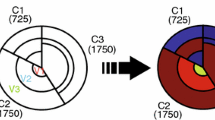Abstract
Representation of information given by clustering methods is of little satisfaction. Some tools able to localize classes into the input space are expected in order to provide a good visual support to the analysis of classification results. Actually, clusters are often visualized with the planes produced by factorial analysis. These representations are sometimes unsatisfying, for example when the intrinsic structure of the data is not at all linear or when the compression phenomenon generated by projections on factorial planes is very important. In the family of clustering methods, the Kohonen algorithm has the originality to organize classes considering the neighborhood structure between them [9][10][6]. It is interesting to notice that many transcription in graphical display have been conceived to optimize the visual exploitation of this neighborhood structure [5][11]. Each one helps the interpretation in a particular context. they are twinned to the Kohonen algorithm and called Kohonen maps. For example, one used in the following helps the interpretation of the classification from an exogenous or endogenous qualitative variable. Unfortunately, no one allows for a visualization of the data set structure in the input space. This is very regrettable when the Kohonen map makes such a folder that two classes close to each other in the input space can be far on the map. A tool that visualizes distances between all classes gives a representation of the classification structure in the input space. Such a tool is proposed in the following. As the Kohonen algorithm has the property to reveal effects of small distances also called local distances and the new tool is able to control big distances, this clustering method has now a large field of exploitation.
Access this chapter
Tax calculation will be finalised at checkout
Purchases are for personal use only
Preview
Unable to display preview. Download preview PDF.
Similar content being viewed by others
References
Blayo F. and Demartines P. (1991). Data analysis: how to compare Kohonen neural networks to other techniques? In Proceedings of IWANN’91, pages 469–476, Springer Verlag, Berlin.
Chavent M., Guinot C., Lechevallier Y. et Tenenhaus M. (1999). FrMéthodes divisives de classification et segmentation non supervisée: Recherche d’une typologie de la peau humaine saine. Revue de Statistique Appliquée, XLVII, 87–99.
Cottrell M. and Ibbou S. (1995). Multiple Correspondence Analysis of a crosstabulations matrix using the Kohonen algorithm. In Proceedings of ESAN’’95, M. Verleysen (Eds), pages 27–32, D Facto, Bruxelles.
Cottrell M. and de Bodt E. (1996). A Kohonen Map Representations to Avoid Misleading Interpretations. In Proceedings of ESANN’96, M. Verleysen (Ed.), pages 103–110, D Facto, Bruxelles.
Cottrell M. and Rousset P. (1997). A powerful Tool for Analysing and Representing Multidimensional Quantitative and Qualitative Data. In Proceedings of IWANN’97, pages 861–871, Springer Verlag, Berlin.
Cottrell M., Fort J.C., Pagès G. (1998). Theorical aspects of the SOM algorithm, Neuro Computing, 21, pages 119–138
Cottrell M., Gaubert P., Letremy P. and Rousset P. (1999). Analyzing and representing multidimensional quantitative and qualitative data: Demographic study of the Rhône valley. The domestic consumption of the Canadian families. E. Oja and S. Kaski (Eds), pages 1–14, Elsevier, Amsterdam.
Guinot C, Tenenhaus M., Dubourgeat M., Le Fur I., Morizot F. et Tschachler E. (1997). FrRecherche d’une classification de la peau humaine saine: méthode de classification et méthode de segmentation. Actes des XXIXe Journées de Statistique de la SFdS, pages 429–432.
Kohonen T. (1993). Self-organization and Associative Memory. 30ed., Springer Verlag, Berlin.
Kohonen T. (1995). Self-Organizing Maps. Springer Series in Information Sciences Vol 30, Springer Verlag, Berlin.
Rousset P. (1999). Application des algorithmes d’auto-organisation à la classification et à la prevision. Thesis of doctorat, University Paris I, pages 41–68.
Author information
Authors and Affiliations
Editor information
Editors and Affiliations
Rights and permissions
Copyright information
© 2001 Springer-Verlag Berlin Heidelberg
About this paper
Cite this paper
Rousset, P., Guinot, C. (2001). Distance between Kohonen Classes Visualization Tool to Use SOM in Data Set Analysis and Representation. In: Mira, J., Prieto, A. (eds) Bio-Inspired Applications of Connectionism. IWANN 2001. Lecture Notes in Computer Science, vol 2085. Springer, Berlin, Heidelberg. https://doi.org/10.1007/3-540-45723-2_14
Download citation
DOI: https://doi.org/10.1007/3-540-45723-2_14
Published:
Publisher Name: Springer, Berlin, Heidelberg
Print ISBN: 978-3-540-42237-2
Online ISBN: 978-3-540-45723-7
eBook Packages: Springer Book Archive




